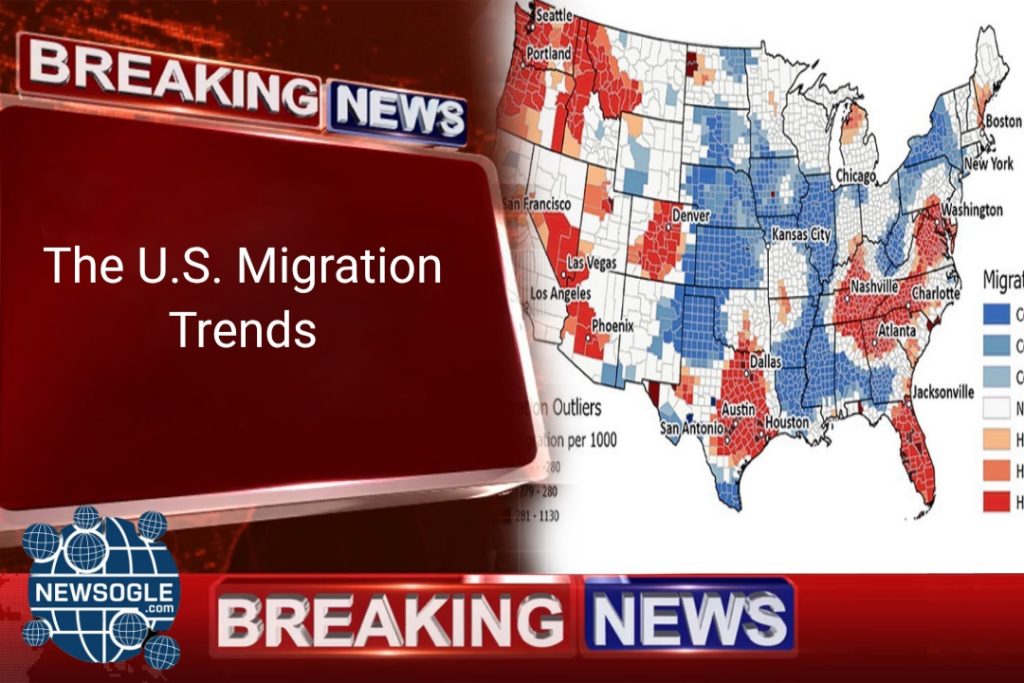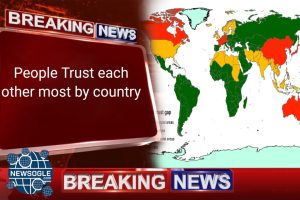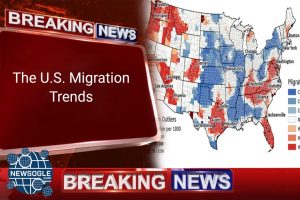
The movement of Americans across the United States has accelerated dramatically since 2020, fundamentally reshaping the demographic and economic landscape of the nation. Fueled by the rise of remote work, soaring housing costs in traditional coastal hubs, and a desire for lower taxes, millions of residents are voting with their moving vans.
This year’s data, often compiled using sources like U-Haul migration patterns or Census Bureau estimates, reveals clear winners and losers in the Great American Reshuffle. The key takeaway is a continued, decisive shift from the expensive Northeast and West Coast towards the more affordable Sunbelt States Growth corridor. Understanding these U.S. Migration Trends is vital for policymakers, real estate investors, and anyone interested in the future of American communities.
The Migration Hotspots: Top-Ranked States Americans Are Moving To
The states leading the pack in net inbound migration are defined by low tax burdens, relatively affordable housing markets (though rapidly increasing), and favorable climates. These states are not just gaining population; they are gaining talent, investment, and significant political influence.
1. Texas: The Lone Star Magnet
Texas continues its reign as a top destination, consistently attracting residents from both the West Coast and Midwest. Its appeal is multi-faceted:
- Economic Opportunity: No state income tax and a sprawling, diverse economy, especially in tech and energy.
- Affordability Edge: While cities like Austin are expensive, the vast size of Texas offers greater housing accessibility compared to California or New York.
- Corporate Migration: The ongoing relocation of major corporate headquarters solidifies Texas’s status as a premier Inbound Migration Hotspot.
2. Florida: The Sunshine State Surge
Florida remains a powerhouse for new residents, particularly retirees and high-net-worth individuals, but increasingly for working families as well.
- Fiscal Benefits: Zero state income tax is the primary driver, offering significant savings for high earners.
- Lifestyle: The warm climate and abundant coastal communities appeal broadly.
- Growth Implications: This massive influx is placing significant strain on infrastructure and insurance markets, key challenges for the state’s long-term sustainability.
3. The Carolinas and Tennessee: Southern Hospitality and Opportunity
North Carolina, South Carolina, and Tennessee are seeing massive population boosts. These states are often viewed as offering the perfect blend of Southern quality of life with rapidly growing job markets, particularly in finance, technology, and manufacturing. The low cost of living compared to Mid-Atlantic states makes them extremely appealing for both young professionals and those nearing retirement. These are increasingly seen as the Best States to Move To for balancing career and lifestyle.
The Outbound Exodus: States Losing the Migration Battle
Conversely, several high-cost, high-tax states—primarily located in the Northeast, Mid-Atlantic, and the Pacific Coast—are experiencing a significant net outbound migration. This pattern highlights the increasing financial pressure on residents in these areas.
1. California: The Golden State Drain
California, despite its vast economy, is the undisputed leader in Outbound Migration U.S. This exodus is driven by several key factors:
- Housing Crisis: Unprecedented housing costs make homeownership unattainable for large swathes of the population.
- High Taxes: The state’s income tax rate is among the highest in the nation.
- Regulatory Burden: Many small business owners cite regulatory difficulties as a reason to relocate to states like Texas or Arizona.
2. New York and Illinois: High-Cost Havens Lose Ground
States like New York and Illinois, anchored by major metropolitan areas like New York City and Chicago, are struggling to retain residents. The high overall Cost of Living Migration is accelerating this departure.
- New York: Residents are fleeing to Florida and North Carolina, prioritizing lower taxes and warmer weather over the state’s urban density.
- Illinois: High local and state taxes, combined with persistent municipal debt issues, push residents primarily into states like Indiana and Florida.
Key Drivers of the Domestic Population Shift
The decision to move is rarely based on a single factor. Today’s migration is a sophisticated calculation involving economics, lifestyle, and career flexibility.
The Remote Work Effect
Before 2020, migration often followed jobs. Now, for many white-collar workers, the job follows the person. This flexibility allows workers to capture their high California or New York salaries while spending them in lower-cost markets like Tennessee or Georgia, maximizing disposable income. This shift alone accounts for a significant portion of the movement to states with lower Cost of Living Migration.
Taxation and Fiscal Policy
The correlation between states with high outbound migration (New York, California, New Jersey) and high state and local tax rates is undeniable. Conversely, the states with the lowest tax burdens (Florida, Texas, Tennessee) are seeing the most dramatic Population Growth by State. For retirees and entrepreneurs, saving tens of thousands of dollars annually in taxes is a powerful motivator.
Housing Affordability Crisis
While wages have stagnated relative to housing prices nationwide, the disparity is most pronounced in legacy coastal markets. A primary reason Americans are moving to the Sunbelt is the promise of achieving homeownership, or at least securing more square footage for significantly less money. This quest for affordable shelter is perhaps the single most potent economic driver of the modern migration patterns.
Conclusion: Planning for Tomorrow’s Migration Landscape
The U.S. Migration Trends confirm that the population center of the United States continues its steady march southward and westward. For state and local governments, these rankings serve as a stark warning: unsustainable tax burdens, regulatory hurdles, and chronic housing shortages will inevitably drive residents away. The states currently leading the pack in net inflows—the Sunbelt States Growth leaders—must now focus urgently on infrastructure, water management, and smart growth policies to avoid replicating the congestion and affordability issues that plagued the coastal states they are drawing residents from. This reshuffle is far from over, and its long-term economic impact will define the next decade of American growth.

Aleda Kawis is the Professional Journalist and serving in the field since 2012. She keeps extensive experience as investigating journalist and media influencer.







